Car radiators work hard to keep cars cool, but like any other part beneath the bonnet, they can develop faults that impact their performance or cause problems for the engine. In this guide, we’ll be looking at how car radiators work, what the most common problems are, and how to repair a cooling system for optimum safety and performance.
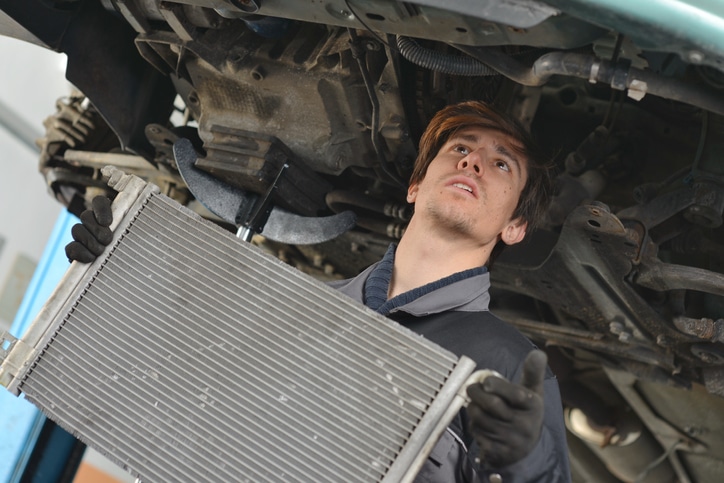
Quick Navigation
What is a Car Radiator?
A car radiator is a heat exchanger that’s used to lower the temperature of coolant/antifreeze in the engine. Radiators contain narrow tubes that are designed to disperse heat rapidly, helping to maintain the correct operating temperature of the engine.
- Radiators make up the main part of a vehicle’s cooling system.
- They’re placed at the front of the engine where they’re fed by a flow of air, which helps with the cooling process.
- Radiators receive a continuous flow of coolant/antifreeze, which passes through the engine bay to keep moving parts working at the right temperature.
Hot coolant/antifreeze goes in and cool coolant/antifreeze comes out; that sums up what a radiator does. To make sure that the coolant/antifreeze is able to pass through the radiator at an adequate speed, it’s forced through by a centrifugal pump – maximising the flow rate of the coolant fluid.
As well as channels of honeycomb-shaped tubes, radiators draw cool air from the front of the car with a cooling fan, which accelerates how quickly the fluid flow is cooled – helping to prevent the engine from overheating.
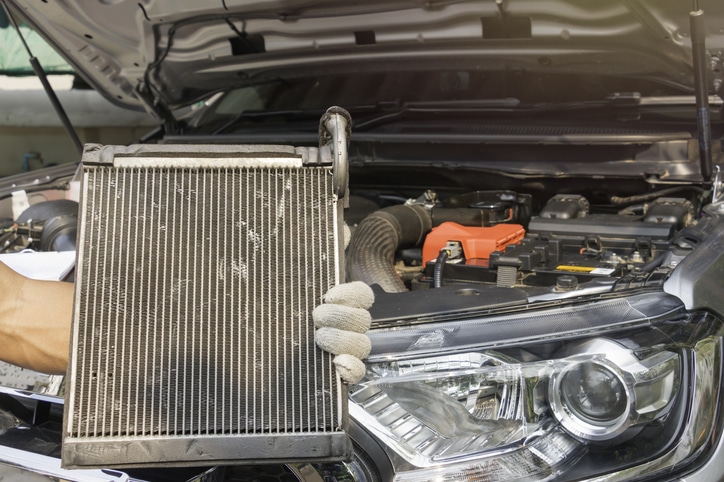
Common Car Radiator Problems
Car radiators can experience problems like any other part of a car, but with regular maintenance and upkeep, faults shouldn’t happen that often. It’s worth remembering that when something happens to a car radiator, the results tend to be extreme (think steam billowing from under the engine and a rapid rise in engine temperature) – so any faults you do experience will at least be easy to spot.
Here are some of the most common car radiator problems to be aware of and the symptoms you should look out for:
Leaky Hoses
The hoses which circulate coolant/antifreeze to and from the radiator are among the most likely areas of the system to cause problems. Gradual corrosion, wear and tear, or even bad potholes can cause small splits or cracks in coolant hoses, and they often need changing regularly to maintain the performance of the cooling system.
- Rising engine temperature
- Steam rising from under the bonnet (may only be a small amount depending on the size of the leak)
- A patch of brightly coloured liquid on the ground when the car is parked
- Fluid or residue on different areas of the engine
- An overheating warning light on the dash
Faulty Thermostat
The thermostat is connected to the engine control unit (ECU) and is responsible for controlling the flow of coolant/antifreeze entering the radiator. If it fails, the engine can overheat very rapidly because it isn’t receiving fluid that’s cooled to the correct temperature.
- Very high engine temperature reading, which happens quite suddenly when driving
- Erratic engine temperature change, caused by the thermostat trying to recalculate the flow and temperature of the coolant/antifreeze
- Coolant/antifreeze leaks around the area of the thermostat
- Steam coming out from under the bonnet
- An overheating warning light on the dash
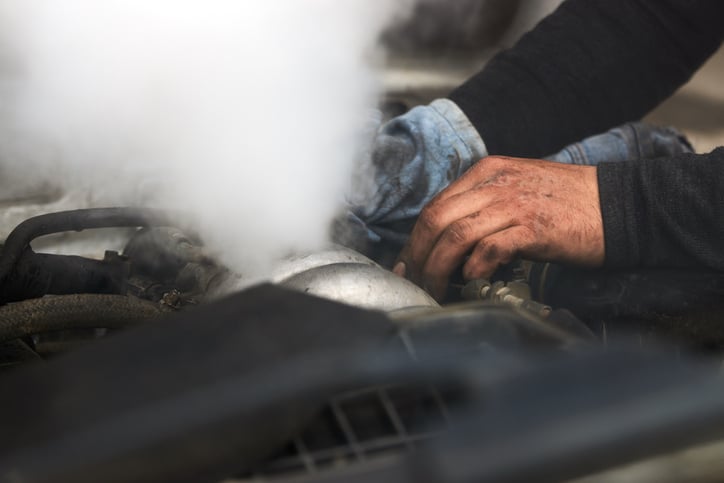
A Crack or Hole in the Radiator
Sometimes, small cracks and holes can form on a car radiator. They’re often caused by general wear and tear from deposits in the cooling system, but may also happen as a result of a bad jolt in the road. The symptoms of a cracked car radiator are pretty much the same as they would be if you had a leaky hose, including:
- Rising engine temperature
- Steam coming out from under the bonnet
- An overheating warning light on the dash
- Coolant/antifreeze visible on other engine parts or on the floor under the car
- Steam blowing from a specific spot on the radiator
Failed Water Pump
One of the most common faults associated with car radiators is a failed water pump. The water pump moves coolant/antifreeze around the engine and forces it back through the radiator. Over time, the pulley and bearings which operate the pump can become loose, meaning that the pump can’t maintain the same water flow rate.
- Overheating engine
- An overheating warning light on the dash
- A high-pitched whining noise coming from the front of the car (this is the loose pulley)
- Steam coming from the radiator
- Coolant/antifreeze leaking from the water pump at the front of the car
Failed Car Radiator Fan
Most new cars are fitted with an electric fan which draws in cool air to keep the radiator cool. The cooling fan is only used at low speeds, normally under 30 mph, when the radiator isn’t receiving a steady flow of air to aid the cooling process. If the fan fails, a car may overheat at low speeds but then go back to normal at higher speeds – this is how you can tell you’re dealing with a faulty radiator fan.
- Gradual rise in temperature at low speeds
- A small amount of steam rising from under the bonnet
- An overheating warning light on the dash
- The problem stops when you get on a faster road
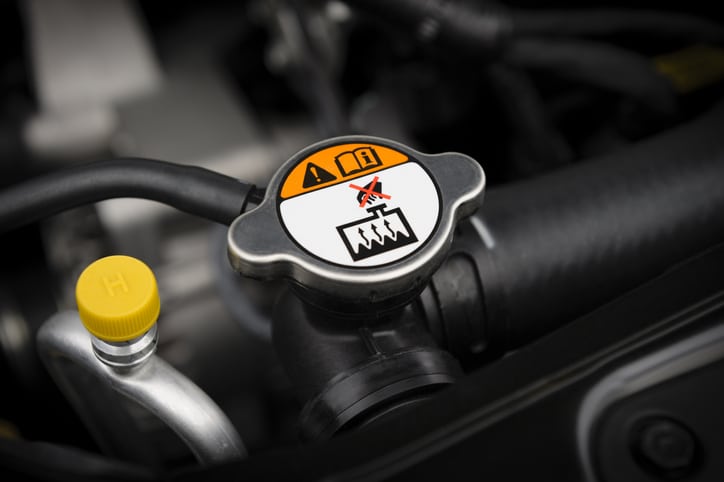
Air in the Cooling System
Cooling systems are sealed to ensure the maximum flow rate of coolant/antifreeze. If air gets in the system, it can create pockets which restrict the flow of fluid, leading to overheating. Normally, air gets in the system during the radiator flushing process, which we’ll get to later.
- Rising engine temperature
- An overheating warning light on the dash
- Steam coming out from under the bonnet
Can You Repair a Car Radiator?
Issues with cooling account for a vast majority of car breakdowns, with overheating among the top 10 problems drivers face on the road. Luckily, most faults associated with the radiator and cooling system can be easily fixed, and, depending on the scale of the problem, repair costs shouldn’t be too high either.
If you notice that your car is overheating, the first thing to do is take it to a professional mechanic for a full diagnosis. They’ll be able to tell you exactly where the problem is, and what work they need to do to put it right.
Some parts of the cooling system will cost more to repair than others. For instance, if it’s just a leaky radiator hose that needs replacing, this will cost a lot less than replacing the thermostat, water pump or heater core.
Before you commit to a professional repair, it’s worth seeing if you can use a leak repair fluid. These can be affordable and quite easy to use – some just involve pouring straight in without any draining or flushing, and give a permanent repair.
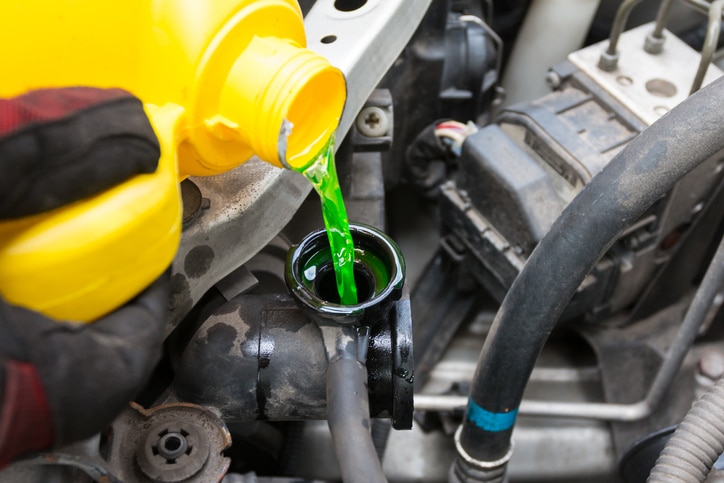
Prestone Car Radiator Maintenance Guides
If you’re looking for more help and advice on maintaining a car radiator, our blog is packed with practical guides that can help you troubleshoot problems and get the best performance from the cooling system. Access a handful of our essential car radiator maintenance guides below:
Find out how to safely flush your car’s radiator, without trapping air in the cooling system, in our essential how-to guide.
Whether you want to prevent your engine from overheating or you’re sat at the side of the road with steam billowing out from under the bonnet, our guide on how to stop your car from overheating has preventative tips as well as practical advice on what to do in an emergency.
Find out when to check your car’s coolant/antifreeze level to maintain optimum performance from the cooling system in this essential FAQ guide.
Prestone car maintenance products are developed to cope with extreme driving conditions, so you know they’ll guarantee optimum performance on your daily commute. Browse our range of high-performance maintenance fluids here.